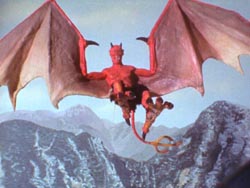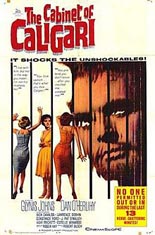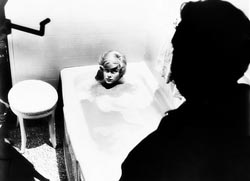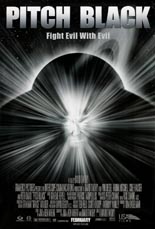
 In The Bare Wench Project, the umpteenth Blair Witch Project parody of that year, four sorority sisters and their lunkheaded guide, Lunk, venture into the hills to search for the “Bare Wench.” Because this is written and directed by Jim Wynorski (Scream Queen Hot Tub Party) and the sisters include Skinemax vets Julie K. Smith, Nikki Fritz, Lorissa McComas and Antonia Dorian, it’s less a spoof and more an excuse for wall-to-wall boobage. To date, it also has spawned four sequels to its source’s measly one.
In The Bare Wench Project, the umpteenth Blair Witch Project parody of that year, four sorority sisters and their lunkheaded guide, Lunk, venture into the hills to search for the “Bare Wench.” Because this is written and directed by Jim Wynorski (Scream Queen Hot Tub Party) and the sisters include Skinemax vets Julie K. Smith, Nikki Fritz, Lorissa McComas and Antonia Dorian, it’s less a spoof and more an excuse for wall-to-wall boobage. To date, it also has spawned four sequels to its source’s measly one.
No sooner has our skank quartet embarked on its trek when one whines, “My twins are sweaty,” prompting a brief stop in the shade so they all can remove their shirts. (This scenario repeats several times with slight variation over the next 70 minutes.) Wynorski would have you believe that if you got four nubile chicks in the middle of nowhere and switched on a video camera, numerous acts of lesbian lovin’ would occur: south-of-the-border kisses, impromptu campfire stripteases, bumping nipples together with devil-may-care abandon. There is more flicked-tongue action in Bare Wench than the last three snake movies I’ve seen combined.
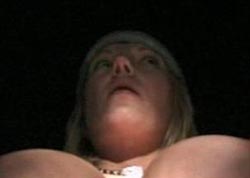 Instead of Blair Witch‘s iconic twigs, the girls encounter dildos and other sex toys. Instead of hearing children’s voices in the middle of the night, they hear a braying donkey. Instead of keeping the witch unseen, they show Julie Strain (Heavy Metal 2000) in a long white wig.
Instead of Blair Witch‘s iconic twigs, the girls encounter dildos and other sex toys. Instead of hearing children’s voices in the middle of the night, they hear a braying donkey. Instead of keeping the witch unseen, they show Julie Strain (Heavy Metal 2000) in a long white wig.
The only scene offering any true parody is of a flashlight-lit Smith making a dead-of-night confession into the camera. But whereas Heather Donahue was shot neck up, a buck-naked Smith is shown from the waist. The shot is held so long, you’ll go from amazement to wondering what kind of magic lens Wynorski must have employed.
If you found Donahue annoying in Blair Witch, wait until you get a load of these ladies. (The end-credit bloopers make one wonder how they mustered enough knowledge to remove their clothes, much less walk.) There’s nothing funny to be found in Bare Wench, unless you’re the type to chuckle at character names like Dick Bigdickian; I am not. —Rod Lott


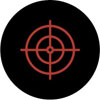 To mention the word “masterpiece” in the same breath as “Jess Franco” is like pairing “Chef Boyardee” and “gourmet.” Yet 1969’s
To mention the word “masterpiece” in the same breath as “Jess Franco” is like pairing “Chef Boyardee” and “gourmet.” Yet 1969’s 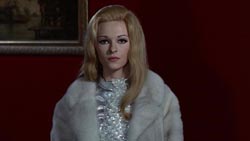

 If not for representing the public’s first look at the work of Ray Harryhausen kids Dennis Muren and David Allen, it’s likely
If not for representing the public’s first look at the work of Ray Harryhausen kids Dennis Muren and David Allen, it’s likely 